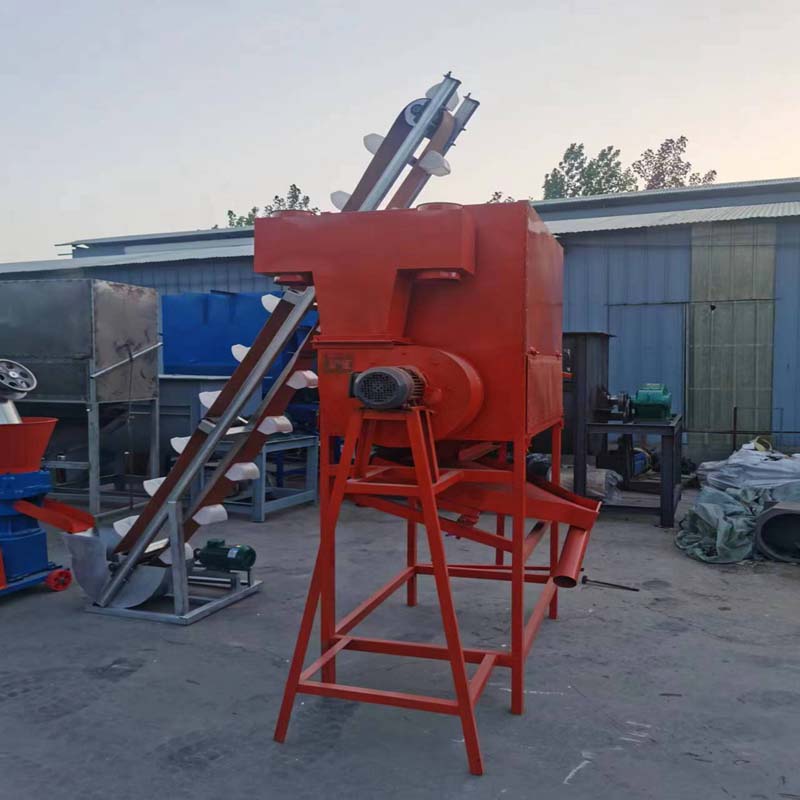Innovative Pellet Feed Production Machines for Efficient Animal Nutrition Solutions
Nov . 29, 2024 16:22 Back to list
Innovative Pellet Feed Production Machines for Efficient Animal Nutrition Solutions
The Significance of Pellet Feed Machines in Modern Agriculture
In recent years, the agricultural and livestock sectors have witnessed a remarkable transformation, driven by the need for efficiency, sustainability, and enhanced productivity. One crucial innovation that has emerged in this landscape is the pellet feed machine. This equipment plays a vital role in the production of high-quality animal feed, benefiting farmers, livestock, and the environment alike.
Understanding Pellet Feed Machines
Pellet feed machines are specialized devices designed to convert raw materials such as grains, legumes, and other feed ingredients into pelletized form. The process involves grinding the raw materials, mixing them with added nutrients, conditioning the mixture, and then extruding it through a die to create uniform pellets. The pellets produced are compact, easy to store, and more palatable to animals, which ultimately enhances their feed conversion rates and overall health.
Advantages of Pellet Feed
1. Nutritional Efficiency One of the primary benefits of pellet feed is its enhanced nutritional profile. Pelletization helps in retaining the nutrients, making it easier for animals to digest and absorb essential vitamins and minerals. This results in healthier livestock and improved growth rates.
2. Reduced Waste When animals are fed with loose feed, there is a higher chance of spillage and waste. Pellets minimize this issue by encouraging animals to consume more feed due to their appealing texture and size. This means that farmers can get more value from their feed inputs, translating into cost savings.
pellet feed machine

3. Improved Feed Storage Pelletized feeds have a longer shelf life compared to traditional loose feeds. The compact nature of pellets makes storage more manageable, reducing the risk of spoilage and contamination. This is particularly important in regions where storage conditions may not be optimal.
4. Encouraging Sustainable Farming Practices Sustainability is a key concern in modern agriculture. Efficient pellet feed machines are designed to reduce energy consumption and waste during the production process. By using local feed ingredients, farmers can also minimize their carbon footprint and promote environmentally friendly practices.
The Role of Technology
Technological advancements have significantly enhanced the capabilities of pellet feed machines. Modern machines are equipped with sophisticated control systems that allow for precise adjustments in temperature, pressure, and feed composition. This level of control ensures that the pellets produced meet the specific dietary needs of different livestock species.
Furthermore, automation and digital monitoring systems have streamlined the production process, reducing labor costs and improving overall efficiency. Farmers can now produce high-quality feed more quickly and with less manual intervention, freeing up time for other critical farming operations.
Conclusion
Pellet feed machines are revolutionizing the way animal feed is produced and consumed in the agricultural sector. By enabling the manufacture of high-quality, digestible, and nutritionally balanced feed, these machines contribute to healthier livestock and increased farm profitability. As the demand for animal products continues to rise globally, the adoption of pellet feed technology presents an opportunity for farmers to meet this demand sustainably and efficiently. Investing in pellet feed machinery not only benefits individual farms but also supports the broader goal of sustainable agricultural practices that are essential for the future of food security. As we move forward, the role of pellet feed machines will only become more significant in ensuring that agriculture adapts to the challenges of a changing world.
-
Hot Sale 24 & 18 Door Rabbit Cages - Premium Breeding Solutions
NewsJul.25,2025
-
Automatic Feeding Line System Pan Feeder Nipple Drinker - Anping County Yize Metal Products Co., Ltd.
NewsJul.21,2025
-
Automatic Feeding Line System Pan Feeder Nipple Drinker - Anping County Yize Metal Products Co., Ltd.
NewsJul.21,2025
-
Automatic Feeding Line System - Anping Yize | Precision & Nipple
NewsJul.21,2025
-
Automatic Feeding Line System - Anping Yize | Precision & Nipple
NewsJul.21,2025
-
Automatic Feeding Line System-Anping County Yize Metal Products Co., Ltd.|Efficient Feed Distribution&Customized Animal Farming Solutions
NewsJul.21,2025






